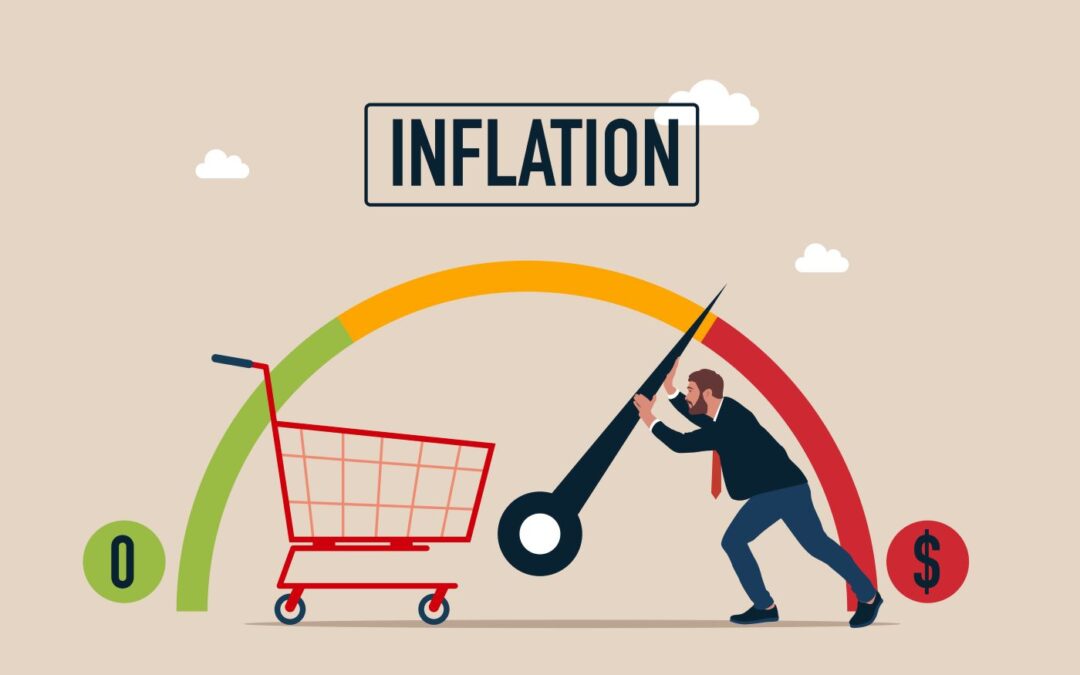The message from the RBA’s interest rate decision last week and subsequent commentaries are that inflation although past its peak will remain too high for comfort through 2023 and 2024. Community inflation expectations, although still anchored at present, are at risk of rising leading potentially to the development of spiraling prices and wages. Essentially, the RBA is concerned that if it does not do enough now to reduce inflation, the task will be much harder and more painful down the track.
After the 25bps cash rate hike last week to 3.35% the RBA indicated the need for more rate hikes ahead marking an intention to go harder over the next few months in order to try and avoid the pain of dealing with entrenched inflation down the track. The RBA’s latest economic forecasts contained in the quarterly Monetary Policy Statement released last Friday illustrate why the RBA sees the need for even higher interest rates, even though those higher interest rates will inflict more pain on parts of the economy.
Essentially, while headline annual CPI inflation probably peaked in Q4 2022 at 7.8% (lower than the RBA’s 8.0% forecast made back in November) the RBA is now forecasting that the reduction in headline annual inflation through 2023 will be less pronounced than forecast back in November. Forecast inflation rates are now 6.7% for June 2023 and 4.8% for December 2023 against November MPS forecasts of respectively 6.3% and 4.7%.
Moreover, the change in the RBA’s forecasts of underlying (trimmed mean) inflation over the past three months are noticeably greater than for headline CPI inflation. Back in November, the RBA forecast that underlying inflation would peak at 6.5% in Q4 2022 before receding to 5.4% in June 2023 and 3.9% in December 2023. Actual annual underlying inflation in Q4 2022 was 6.9% (above the RBA’s November forecast) and the February 2023 MPS has revised upwards underlying inflation forecasts for June and December to respectively 6.2% and 4.3%.
On the RBA’s February inflation forecasts the RBA will end 2023 with inflation dangling still well above 2-3% target range. Even in 2024, when the RBA now forecasts inflation will be a little lower than forecast in November, annual inflation ends the year at 3.1% for the headline CPI and 3.2% for underlying inflation, still above target.
These inflation forecasts over the next two years are based on demand growth slowing quite sharply and labour market conditions much less tight than they are currently. The RBA’s latest forecasts have the unemployment rate rising from 3.5% currently to 3.8% in December 2023 and 4.3% in December 2024. Forecast wage growth associated with this rise in the unemployment rate is a peak annual rise in the wage price index of 4.2% in December 2023 subsiding to 4.0% in December 2024.
It is worth noting that these forecasts showing still high although receding inflation over the next two years are also based on the RBA hiking the cash rate at least two more times. In short, just to get to the edge of territory where inflation expectations stay anchored, the labour market is not too tight and wage growth stops shy of promoting persistently high inflation the RBA believes on its latest forecasts that it needs a cash rate approaching 4%.
Of course, economic forecasts can and do change. There is uncertainty around the transmission channels and lags from previous interest rate hikes. It is possible that demand growth slides more than forecast and that labour market conditions ease more than forecast. As the RBA monitors developments, it has the opportunity to change its view and guidance on interest rates.
In the immediate term, for example, if the January labour force report out this Thursday shows a second consecutive slide in employment and the unemployment rate starting to rise and combines with the Q4 wage price index out Wednesday week showing annual wage growth below 3.5% y-o-y the RBA might pause rate hikes at its early March policy meeting.
We see only a small likelihood of such a labour force/ wage price index combination at this stage. Labour market developments lag developments in economic activity and demand in the Australian economy was very strong throughout 2023.
It is more likely to be several months before it is reasonable to expect a combination of data reports soft enough to present a low-side challenge to the RBA’s latest forecasts of wage growth and inflation. In the mean-time, the RBA is likely to deliver at least two more rate hikes taking the cash rate to 3.85% by May.
We pencil in 3.85% as the cash rate peak, but recognise a peak rate above 4% is possible if the labour market stays very tight (evidenced by the unemployment rate staying at 3.5% or lower over the next three months and/or the wage price index rising to 4% or more with the Q1 2023 release due in mid-May).
These expected rate hikes will add more downward pressure to the parts of the economy that have started to suffer, notably housing activity. Also, there is a further sting in the higher interest rate tail. Once the cash rate is at a peak, the RBA’s determination to ensure that it reduces the risk of having to deal with entrenched inflation implies that the cash rate could stay at its peak for a relatively prolonged period. The higher mortgage interest rate squeeze on housing is likely to stay in play throughout this year and in to 2024.

